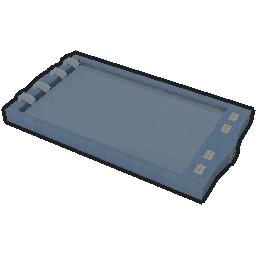Evaporation Pond: Difference between revisions
Corrected first paragraph and changed some of the opinion in the second (consistent with changes to heated evaporation pond change). |
m Added BoostByUnity to Infobox machine |
||
| Line 11: | Line 11: | ||
| Maintenance = 2 | | Maintenance = 2 | ||
| Footprint = 15x9 | | Footprint = 15x9 | ||
| BoostByUnity = no | |||
| Research = Salt Production | | Research = Salt Production | ||
| Designation = Water Extraction & Processing | | Designation = Water Extraction & Processing | ||
Revision as of 15:02, 2 October 2022
| Construction | |
| Workers | |
| Electricity | None |
| Maintenance | |
| Footprint | 15x9 |
| Required Research | Salt Production |
| Boost by Unity | Not Available |
| Designation | Water Extraction & Processing |
| Variants | Evaporation Pond (Heated) |
The Evaporation Pond is one of only two machines which can produce Salt, a critical ingredient in Glass Mix and a requirement to manufacture Glass. The other is the Evaporation Pond (Heated) variant which carries a 50% higher Worker, 50% higher Maintenance, and an additional 60 KW Electricity cost, but has twice the throughput. Compared to one Evaporation Pond (Heated), a pair of Evaporation Ponds consume two more Worker, one additional Maintenance and a significant amount of space to save 60 kW of Electricity.
Salt can be created using either Seawater from a Seawater Pump or from the Brine byproduct of a Thermal Desalinator. If significant amounts of Brine are available from desalination, this is significantly cheaper than creating salt directly from Seawater, though Thermal Desalinators.are very expensive to run.
Recipes
| |
| |
| * Only available in the Supporter Edition | |
